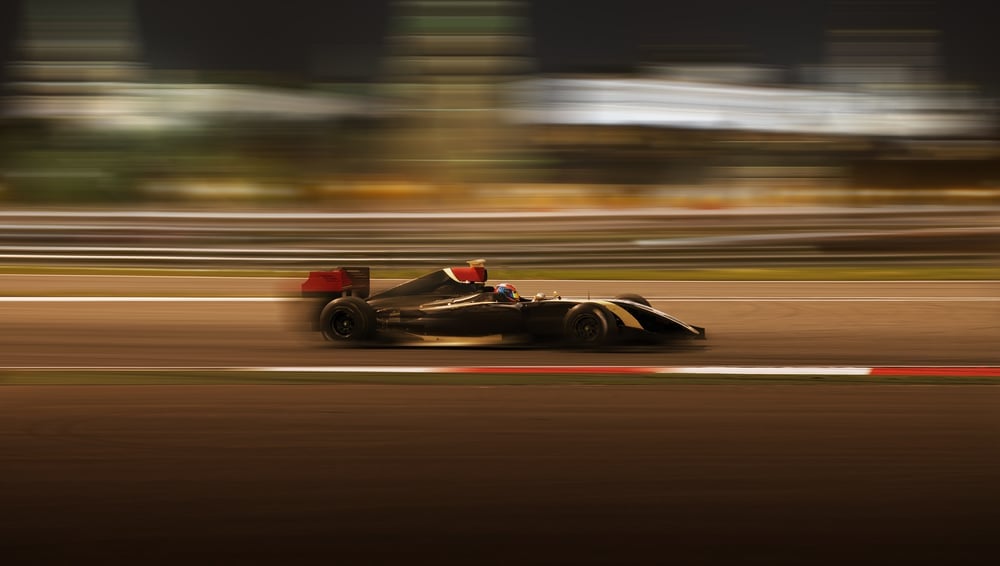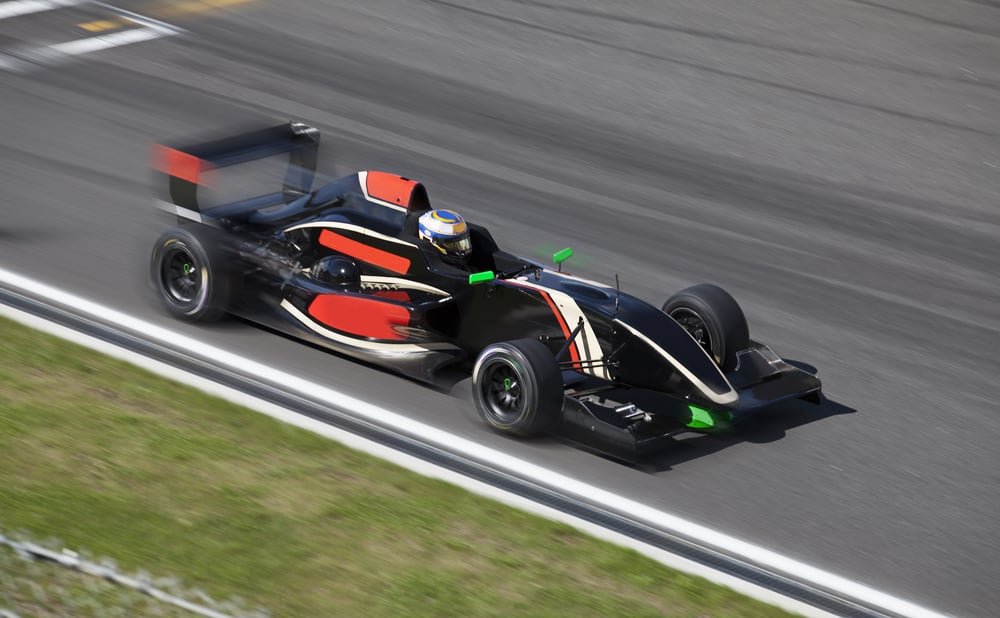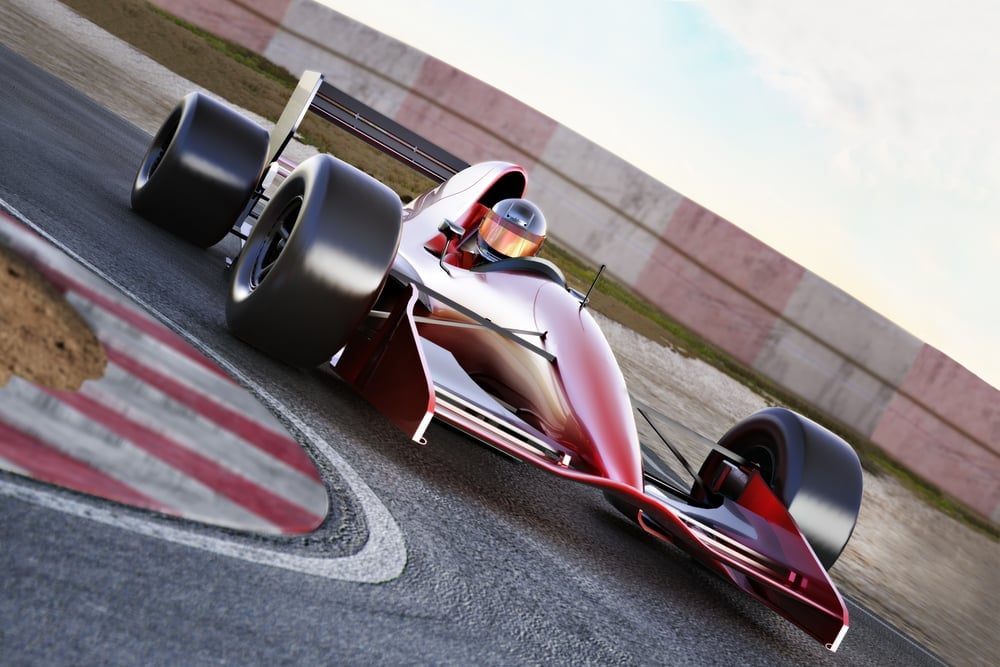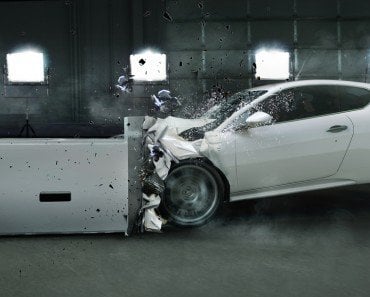Table of Contents (click to expand)
Formula 1 drivers face multiple challenges while racing, such as exposure to high G-force levels, heat stress and muscle tension.
Formula One (F1) is the elite form of single-seater automobile racing. Humans sit in little more than metal chairs with engines, which can reach speeds approaching 500 km/h.
This begs the question, what are the side effects that drivers must be experiencing as a result of their high-risk career choice?
Should F1 drivers be considered athletes? After all, they just sit in a car and drive around a closed track. You would think they’d mainly require fine motor coordination for this repetitive task. It’s not like they’re running around, challenging their fitness and stamina, as athletes do in professional sports.
Well, if you think that, you are quite mistaken!
As it turns out, F1 drivers need to stay in peak physical shape, as driving these incredible cars at such breakneck speeds pushes their body to limits that go beyond some professional sports. This is why a race doesn’t extend beyond 2 hours. It is for the safety of the drivers that this time restriction is strictly enforced.

If you’re interested in learning more about the world of F1 racing, I recommend Netflix’s documentary titled Formula 1: Drive to Survive.
Recommended Video for you:
What Are The Stressors Faced By F1 Drivers?
F1 racing places a great deal of physical stress on all parties involved, but naturally, it is way more stressful on the drivers than the pit crew. The stressors faced by F1 drivers include G-forces, heat stress, and muscular effort.
G-force
First of all, it doesn’t take a rocket scientist to guess that a driver is exposed to fluctuating levels of G force (gravity force) while driving. The aerodynamic force achieved by driving a lightweight car at high speeds, coupled with an efficient braking system, result in lateral, longitudinal and vertical loads of force being applied on the driver.
Amazingly, F1 drivers can experience vertical accelerations of up to 3 g’s, which is the same as that experienced by an astronaut during a space launch.
On Earth, we experience a g force of 1 g or 9.8m/s. This means that 3 g’s is equal to 3 times the force of gravity.
Research shows that exposure to such high g levels, coupled with their frequency and rate of change as the drivers take sharp turns and continuously accelerate and decelerate, consumes a large amount of the driver’s energy.
Mark Webber, a former F1 driver for Red Bull, stated that he used to hold his breath sometimes while driving, as it was very difficult to breathe at g levels >3. Studies have also found that at 2-3 g’s, drivers’ eyesight grows hazy, and peripheral vision worsens.
Heat Stress
One of the worst stressors in this sport are the high temperatures to which the drivers are exposed while driving at such high speeds. Drivers wear multiple layers of fireproof clothing (such as Proban or Nomex), which trap heat. This, coupled with the heat radiated by the engine, can cause drivers to lose up to 5% of their total body fluids in the form of sweat within a short span of time. This can cause dehydration, which further impacts attention span and motor coordination.
A study has proven that at higher temperatures, drivers are more prone to accidents, as they show lapses in concentration in the presence of heat stress.

Muscular Effort
Furthermore, the muscular effort required to hit the accelerator or brakes of these cars isn’t the same as driving any other vehicle.
A driver applies 135 pounds of force (the amount of force required to do one rep with 60 kgs on a leg press machine) to the brake pedal and in about a 100-minute race, the driver hits the brake pedal over 250 times. While steering, about 35 pounds of turning force is required per turn, and this occurs around 1000 times per race. Putting all of this together, one can safely conclude that F1 drivers perform at physical levels similar to professional athletes.
The state of heightened alertness a driver is in adds to the emotional stress component of this high-octane endeavor. Research conducted on racers has found that their heart rate can reach up to 190 beats per minute during a race.
In addition to the well-documented effects detailed above, speculation is rife that the vibrations from the car and engine when driving at the high speeds these top-notch drivers achieve has detrimental effects on their perceptual, motor and cognitive abilities. However, to date, no research has been conducted to quantify the magnitude of stress caused by these whole-body vibrations.
What Are The Qualities An F1 Driver Needs?
An F1 driver needs to be incredibly fit, both mentally and physically. The need to stay sharp, focused, hydrated and alert at all times throughout these intensely competitive races is incredibly difficult. And, unlike other professional sportsmen, they have to do this while subjected to very high G loads that affect their mental faculties.
An F1 driver needs superior reflexes, especially when it comes to reaction times for quick life-saving turns to avoid crashes. The reaction rate of an average F1 driver is 100 milliseconds, while that of an ordinary individual is 300 milliseconds.
F1 drivers hit the gym regularly and train to strengthen their neck muscles, triceps, biceps and their core. They don’t skip leg day either, as they need their leg strength to hit the brakes and the accelerator. Studies have concluded that F1 drivers have the strongest neck muscles, as compared to other types of race car drivers. This is a requirement to prevent neck injury from whiplash, which is a natural consequence of subjecting yourself to high g force while simultaneously turning at high speeds.

Conclusion
It turns out that F1 drivers are like professional athletes, and due to the physical demands of F1 racing, it is necessary for them to exercise regularly and follow a strict and healthy diet.
Millions of dollars are spent each year on developing the user interfaces of the cars so that they are better optimized to help them match the physical and mental demands of this brutal and exhausting motorsport.
References (click to expand)
- Brown, J., Stanton, N., & Revell, K. (2018, June 28). A Review of the Physical, Psychological and Psychophysiological Effects of Motorsport on Drivers and Their Potential Influences on Cockpit Interface Design. Advances in Intelligent Systems and Computing. Springer International Publishing.
- Human Space Flight (HSF) - Crew Answers - spaceflight.nasa.gov
- WYON, D. P., WYON, I., & NORIN, F. (1996, January). Effects of moderate heat stress on driver vigilance in a moving vehicle. Ergonomics. Informa UK Limited.
- JACOBS, P. L., OLVEY, S. E., JOHNSON, B. M., & COHN, K. A. (2002, December). Physiological responses to high-speed, open-wheel racecar driving. Medicine & Science in Sports & Exercise. Ovid Technologies (Wolters Kluwer Health).
- What makes a great F1 driver? - Motorsport Technology. motorsport.tech













